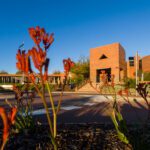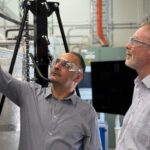Curtin University researchers are at the helm of a major project that will allow important underwater cultural heritage sites, such as historic shipwrecks, to be recreated as immersive 3D virtual experiences.
Lead researcher and manager of Curtin’s HIVE (Hub for Immersive Visualisation and eResearch), Associate Professor Andrew Woods, said photogrammetric 3D reconstruction techniques will be used to generate complex digital models of shipwreck sites from hundreds of thousands of underwater images.
“This painstaking process will allow vivid and immersive experiences to be created, to allow the incredible stories of these historic underwater wrecks to be explained,” Professor Woods said.
“The sites which will be used as test datasets are some of the most historically significant Australian shipwreck sites, including HMAS Sydney (II) and HSK Kormoran from World War II; and the submarine HMAS AE1 from World War I.”
The Western Australian Museum and the Australian National Maritime Museum are key partners on the project, which was recently awarded $460,000 in Federal Government funding by the Australian Research Council.
Professor Woods explained the images were collected by using deep-water remotely operated vehicles fitted with digital still and video cameras, and are now being processed into 3D models using the power of the Pawsey Supercomputing Centre’s Magnus supercomputer.
“Ultimately, this project will allow these important phases of Australian history to be made available to the general public as an interactive experience,” Associate Professor Woods said.
“Shipwreck sites are often the subject of considerable fascination and mystery, and Virtual Reality technologies offer huge potential to reveal the stories of these sites in a dynamic and engaging way for museum audiences.
“We’re really looking forward to the outcome of this project, being able to share the experience of virtually visiting the wreck sites of HMAS Sydney (II) and HMAS AE1, and to help people learn more about these important parts of Australian maritime history which are otherwise disappearing from living memory.”
The project will also provide two scholarships for students to study full-time towards a PhD – on the topics of ‘Evaluating Virtual Heritage Experiences’ and ‘Improving Photogrammetric 3D Reconstruction’.
Professor Erik Champion, UNESCO Chair of Cultural Heritage and Visualisation from the School of Media, Creative Arts and Social Inquiry, who is a project Chief Investigator and will be a PhD supervisor for the ‘Evaluating Virtual Heritage Experiences’ topic, said the project presents outstanding learning opportunities.
“This is an exciting chance to be part of a novel project that can elevate the public experience. In particular, the PhD student I will supervise will help evaluate methods to engage the public with interactive media in a museum setting, and conduct workshops with museum experts and with participants to test open ended games that allow for interactive learning,” Professor Champion said.
In addition, the project is recruiting two staff with software development expertise who will use their skills to perform large-scale 3D reconstruction processing.
Researchers also involved with the project include Curtin University’s Dr Petra Helmholtz and Dr David Belton both from the School of Earth and Planetary Sciences; along with Professor Derek Lichti from the University of Calgary; Adjunct Professor Alec Coles, Catherine Belcher, Dr Ross Anderson, Danny Murphy and Ian Thilthorpe from the Western Australian Museum; and Michael Harvey and Dr James Hunter from the Australian National Maritime Museum.
For more information on how to apply for the two PhD scholarships and two staff positions, please visit here: research.curtin.edu.au/projects-expertise/3D-shipwrecks. Applications close on 20 July, 2020.



